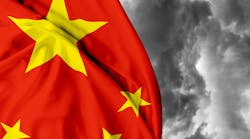While many manufacturers are understandably hesitant to increase their level of sourcing activity within China given its current economic environment, many forward-thinking companies aren’t second-guessing the decision. Instead they realize that now is the time to re-focus one’s sourcing efforts from China for reasons that range from a depreciated Chinese currency to the growing desire on the part of progressive suppliers to further boost the value they offer.
The key is to carefully vet suppliers to mitigate the risk involved – especially since sourcing from Chinese companies is different than sourcing from domestic suppliers. Here are three ways to ensure a Chinese company is the right match, whether the goal is to begin sourcing from China, or increase the volume of materials and products already sourced from the world’s second largest economic powerhouse.
Meet Face to Face
Too many manufacturers will simply conduct online searches and/or hold videoconferences when vetting potential suppliers in China. The upside to the approach is time and money saved up front. The downside is the potential for costly problems on the back end, whether it’s low quality components, supply chain disruptions – or something more severe in the form of legal problems, such as a consumer recall.
A better practice is to meet in person with potential suppliers on a short list of candidates that have been thoroughly vetted. Face-to-face meetings in China often prove to be invaluable since they provide insights that cannot be gained otherwise. Among other things, this includes knowing who actually owns the company involved and the full capabilities of the operation. Another best practice is to ensure the person assigned to visit China and select the best supplier is qualified to do it.
A company located in the Midwest that we recently helped serves as an example of what can happen by not following a rigorous process. The company is a tier-1 supplier that sources home heating and cooling products from China and sells them through big box stores in the United States. The arrangement worked well until an important safety mechanism on one of the products failed, creating the potential for a consumer recall or injured user. In addition, delivery dates began to slip.
Decision-makers of the U.S. company visited the Chinese supplier and discovered it was outsourcing production to an unqualified third party but didn’t reveal it. Additionally, the new third-party supplier in China did not have adequate quality control processes in place. The situation clearly reinforced the need to vet Chinese suppliers for a host of reasons, such as the need to comply with U.S. regulations.
To rectify the matter, the U.S. company worked with the new supplier to bolster quality control capabilities. Fortunately, quality and delivery issues were quickly resolved. What’s more, the effort helped lower the in-process rejection rate from the mid-teens to low-single digits.
Big, or Little Fish?
Of the utmost importance is to determine whether your company is a big or little fish in the pond when it comes to the Chinese supplier selected to be a key part of the supply chain. The best choice is to work with a supplier that will not only accommodate ongoing work, but also adjust to special requests.
The need to carefully consider the size of the supplier and how they fit into the mix applies to all manufacturers. Take, for example, a company we partner with that is well versed in sourcing from China. The publicly traded, global manufacturer is located in the Southern U.S. with sales in excess of $1 billion per year. It normally sources approximately $150 million worth of parts from China per year for various entities.
In this case, the company had sourced $15 million per year worth of critical off-road vehicle components from four Chinese suppliers. The Chinese companies produced the components at five factories. The challenge the company experienced had to do with its approach to managing suppliers, which it patterned after one of the world’s top auto manufacturers.
The flaw in the approach surfaced when the company needed its biggest Chinese supplier to make changes in its processes to accommodate a simple change in shipping labels. It turns out that the supplier could not accommodate the request because the small change in production was not worth the disruption to its larger customers.
The situation was an eye-opener for the U.S. company because it realized it did not have the same leverage as much bigger manufacturing peers working with the supplier and needed a different strategy. Additionally, it more fully appreciated the risk it took in placing too much dependency on its biggest supplier for a critical component.
As an industry leader, the company went to work immediately. It analyzed its options and chose to eliminate redundancies and consolidate the total number of existing suppliers. Now, one of the mid-tier manufacturers handles the majority of the work and serves as the primary supplier given its ability to make necessary adjustments when requested. At the same time, the U.S. company continues to source a smaller amount of components from its largest, yet inflexible Chinese supplier to ensure scalability for future growth.
Vet the Capabilities - Carefully
A common theme among U.S. manufacturers is the desire to work only with a “best-in-class” supplier and one with capabilities that are as good or better than their own. In reality, however, the better choice is to work with a Chinese manufacturer that is a best-in-class supplier for your specific needs.
Another best practice is to move beyond the notion of “doing things the way they’ve always been done” when vetting capabilities of suppliers. That usually means not sending the wrong person, or the wrong mix of people to China, to vet suppliers. In other words, some might send the VP of Purchasing to China when it might’ve been better to send the VP of Engineering. Or, some might send a team of engineers to a supplier when the better approach might’ve been to been to include a member of the quality control group.
Some manufacturers who supply big box retailers must also avoid the trap associated with a social audit, which the big box stores require when suppliers are based in China. The key to remember is that a social audit is not enough to understand a supplier’s capabilities, driving the need for a process audit.
Many manufacturers will do better to insert a deeper level of strategy –along with a healthy level of objectivity – into the process. Doing so ultimately ensures the supplier has the talent, processes and technology needed.
Such was the case for a U.S. company we partnered with to supply products to nationwide retailers. The company, which was new to sourcing in China at the time, got off to a good start until later when retailers received negative customer feedback about the quality of the company’s sporting goods product line. In addition, the company began to realize it needed a better way to effectively manage retail seasonality and also condense product development cycles to coincide with fluctuations in demand at any given time.
To address the issues, the company initiated a process audit of its Chinese manufacturer. The audit revealed major deficiencies in quality control measures, which drove the implementation of a comprehensive process to find alternative suppliers. The process uncovered two highly qualified suppliers that were better equipped than the original supplier to deliver the quality needed.
Armed with this information, the U.S company advised its original supplier that it needed to improve its quality control efforts and match the level of quality that the alternate suppliers could achieve in order to continue the relationship. The supplier subsequently made the changes and quality improved. The effort also bolstered the supplier’s ability to manage supply regardless of seasonality and fluctuations in demand.
It’s about Choosing the Right Path
Success in sourcing from China often boils down to the level of financial and human resources devoted to the effort, in addition to having the necessary expertise.
Cutting corners is clearly not the answer since the cost that goes into finding the right supplier is far less than costs incurred when the wrong choice creates costly problems later. This is especially true for some manufacturers who choose not to sever ties with an underperforming supplier for fear of falling behind, not to mention the preference for not having to reinvest the time, money and effort required to replace them.
The best option is a process-oriented approach, often supported with the right mix of people from engineering, procurement and quality control. The approach can also be greatly strengthened by those with “China moxie” who not only understand the intangibles and nuances that go into working with Chinese manufacturers, but are also fully prepared to objectively guide the process so that the final decision in a supplier is the best one.
Joe Jurken is senior partner at The ABC Group. He founded the company in 2001.




